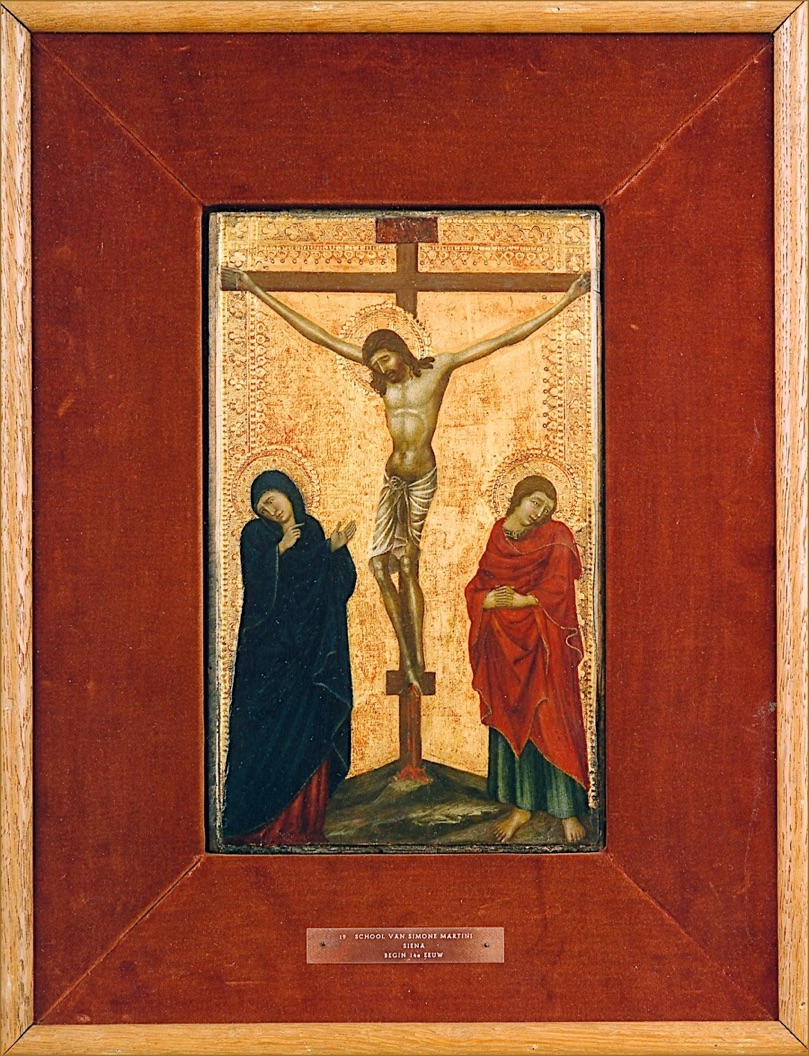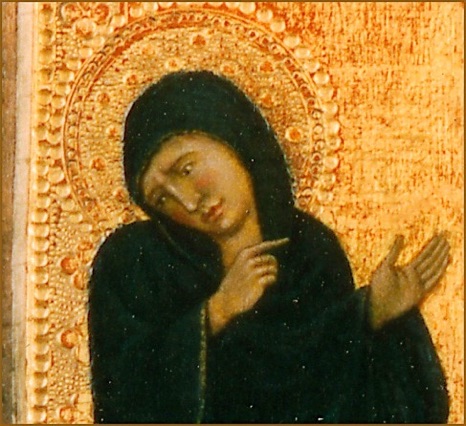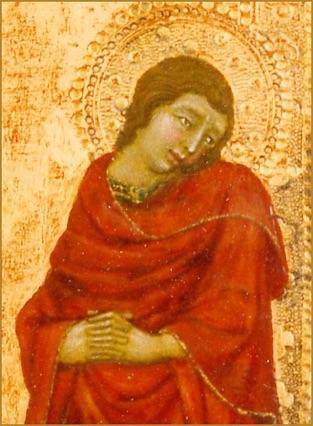The Digitalisation Project Castle Huis Bergh is the intellectual property of the Stichting Musick’s Monument. Ing Hans Meijer was responsible for the technical realisation; Dr Willem Kuiper for the scholarly input. Thanks are also due to the Anjer Cultuurfonds Gelderland; the Stichting de Verenigde Stichtingen “De Armenkorf” in Terborg and “Het Gasthuis te Silvolde”; Mrs P. Tijdink-Hermsen; Mrs L.J.C. Meijer-Kroonder; and the Giese family.




Panel
Martini, Simone, Italian school, Siena
Crucifixion with Mary and John ca. 1320
This panel is perhaps part of a devotional dyptich. Sienese painting
When Christ was crucified, his mother and John the Evangelist were
present. The artist, a Sienese painter from the school of Simone Martini, has tried to express the sorrow that both witnesses felt at the sight of their suffering Saviour. Their heads are tilted towards their shoulders: a common way to express grief in the Middle Ages. Mary is pointing her finger at her son, as if to indicate the cause of her deep sadness. But to the beholder it is absolutely clear what this scene is about, and we do not need it pointing out, for the crucified Christ dominates the painting with his extraordinarily long arms spanning the whole width of the work. To paint peoples heads a little too small in relation to their bodies is a characteristic of Sienese painting. The cross has not one, but three cross-beams. The upper one serves as a name-board, for it usually - though not here - says INRI, which stands for Jesus the Nazarene, king of the Jews. The middle cross-beam, the largest, is there for an obvious reason. The lower, small cross-beam has a gruesome purpose: Jesus feet stand on it, taking the weight of his body a little off his arms, so that he will not die quickly, but suffer prolonged agony. The hillock under the cross is a reference to Golgotha, the mount of skulls, on which Jesus was crucified.


